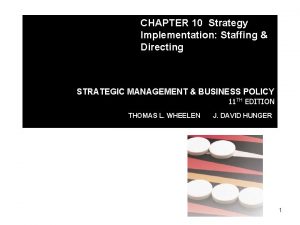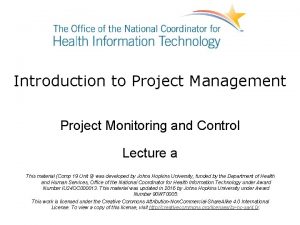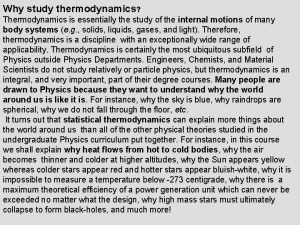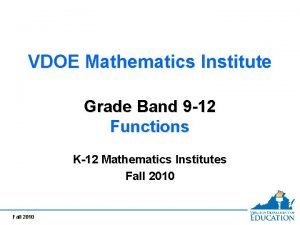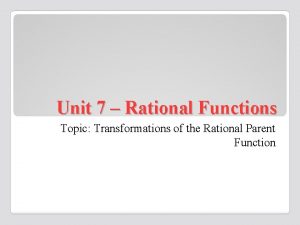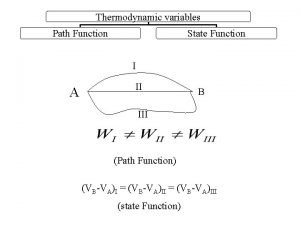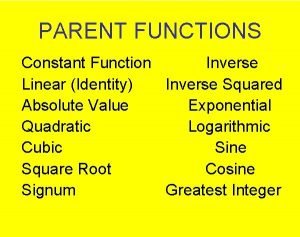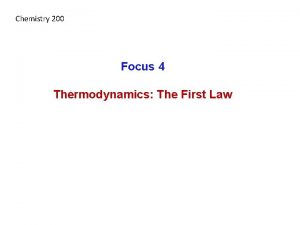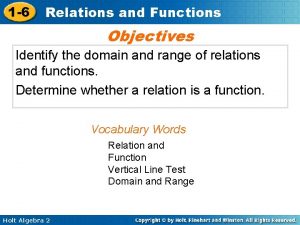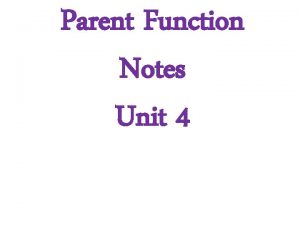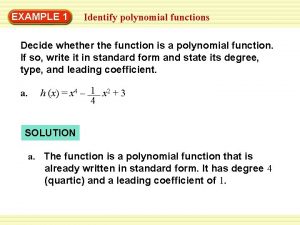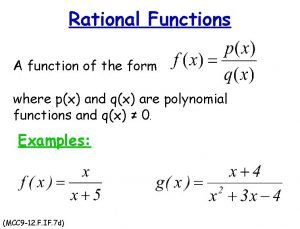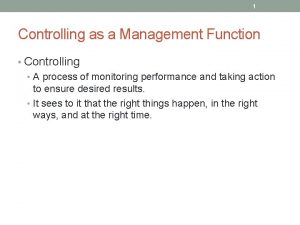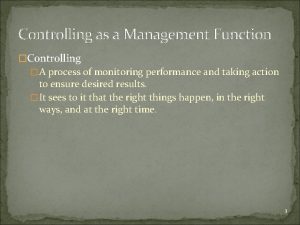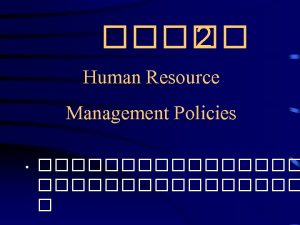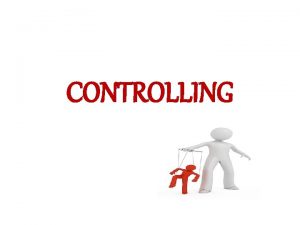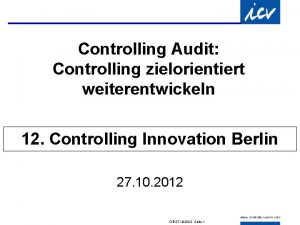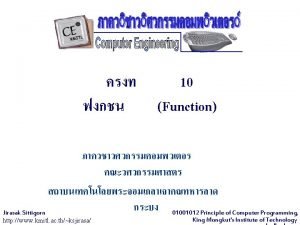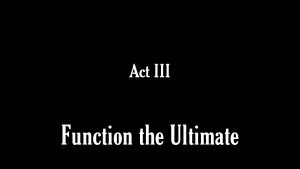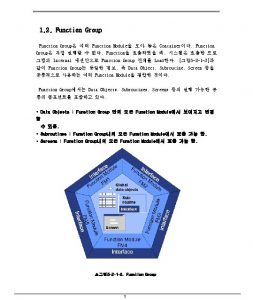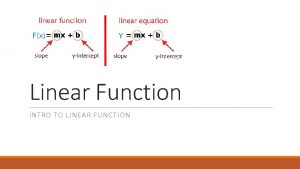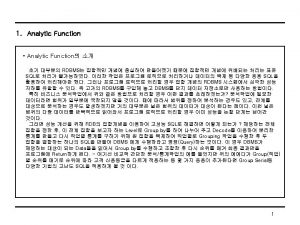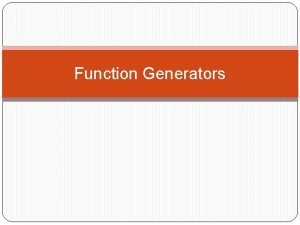CONTROLLING Controlling as a Management Function Controlling A


















- Slides: 18



CONTROLLING

Controlling as a Management Function Controlling : A process of monitoring performance and taking action to ensure desired results. It sees to it that the right things happen in the right way and at the right time. It helps to ensure that objectives and accomplishments are consistent with one another throughout an organization.

Definition Controlling consists of verifying whether everything occurs in conformity with the plans adopted, the instructions issued and the principles established. It has for its object to point out weaknesses and errors in order to rectify them and prevent recurrence. - Henry Fayol

Relationship between Planning and Controlling Planning bridges the gap between where we are standing today and where we want to reach. Controlling means keeping a check that everything is in accordance with the plan and if there is any deviation, taking preventive measures to stop the deviation.

Planning and controlling are interdependent and inter linked Planning and controlling functions always co-exist or have to exist together as one function depends on the other. Planning and controlling are both backward looking as well as forward looking

Planning and controlling cannot be separated. These two are supplementary functions which support each other for successful implementation or execution of both the functions. Planning Controlling

Characteristics and Techniques Control is a management process Control is a continuous process Control is embedded in each level of organizational hierarchy Control is forward looking Control is closely linked with planning Control is a tool for achieving organizational activities Control is an end process Control compares actual performance with planned performance Traditional techniques Modern techniques

Features Controlling is an end function- A function which comes once the performances are made in conformities with plans. Controlling is a pervasive function – Which means it is performed by managers at all levels and in all levels of concerns. Controlling is forward looking- because effective control is not possible without past being controlled. Controlling always looks to future so that follow up can be made whenever required.

Importance Helps in achieving organisational goals. Judging accuracy of standards. Making efficient use of resources. Improving employee motivation. Ensures order and discipline. Facilitates co-ordination and action. Improves performance of the employees. Helps in minimizing errors.

Steps of Controlling Setting performance standards. Measurement of actual performance. Comparing actual performance with standards. Analysing deviations. Taking correcting deviations.

Measuring Performance Establishing Standards Comparing Performance with Standards Taking corrective action Analysing the Deviations

Limitations Difficult in setting quantitative standards: Control system loses its efficiency when standard of performance cannot be defined in quantitative terms. No control on external factors: An enterprise cannot control the various external factors present in the environment.

Resistance from employees : Employees often resist control and as a result effectiveness of control reduces. Employees feel that control reduces or restricts their freedom. Costly affair : Control is an expensive process, It involves a lot of time and effort, as sufficient attention has to be paid to observe the performance of the employees.

Controlling

Thank you

- Srushti Shanbhag (5647) Borni Banik (5658) Anshaj Singh (5640) Soundarya Kumar (5699)
 Controlling management function
Controlling management function Strategic management involves the directing controlling
Strategic management involves the directing controlling Project monitoring and control
Project monitoring and control Pyramid levels of management
Pyramid levels of management Management pyramid
Management pyramid Top management and middle management
Top management and middle management Why study thermodynamics
Why study thermodynamics Rational functions parent function
Rational functions parent function Rational functions transformations
Rational functions transformations Pressure is state function or path function
Pressure is state function or path function Cos parent function table
Cos parent function table Linear nonlinear table
Linear nonlinear table Parent function of exponential
Parent function of exponential Pressure is state function or path function
Pressure is state function or path function When is a relation a function
When is a relation a function Parent function notes
Parent function notes Absolute value of x as a piecewise function
Absolute value of x as a piecewise function Decide whether the function is a polynomial function
Decide whether the function is a polynomial function A rational function is a function of the form
A rational function is a function of the form

